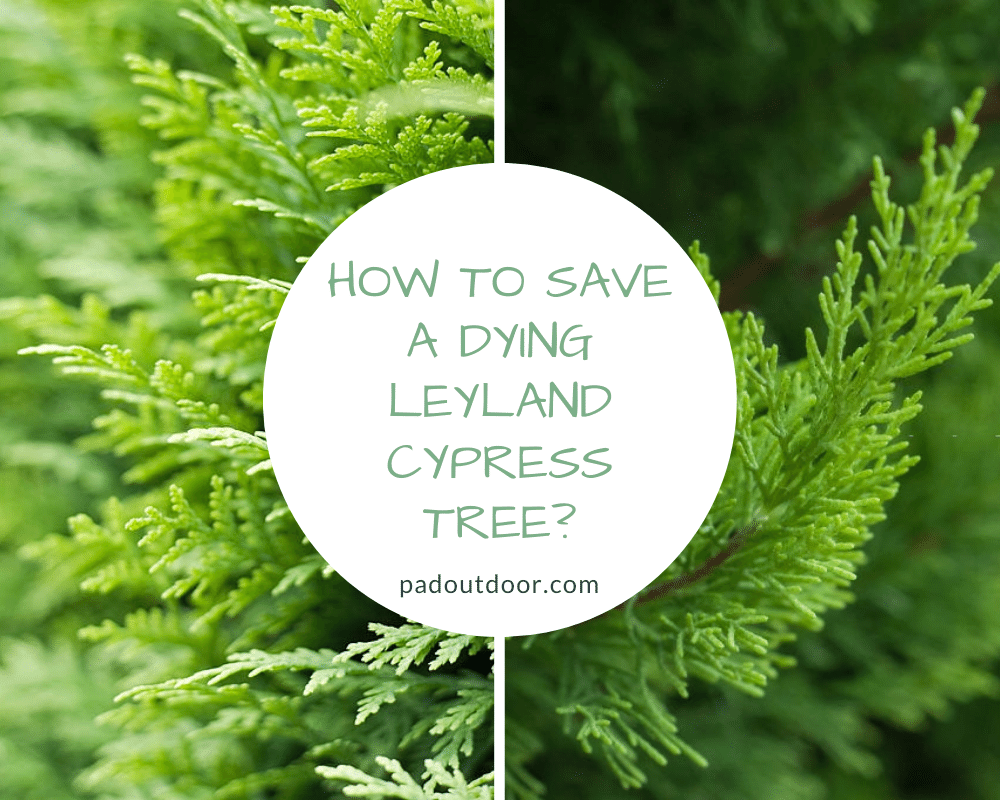How to save a dying Leyland cypress tree? To answer that you must know the main causes first. Read and learn the tips on what to do to save your tree.

The Leyland cypress tree is a common plant used in horticulture. A lot of homeowners love to grow these plants as part of their landscape.
This is a fast-growing tree and can shoot up to 15 meters in a span of 16 years. Furthermore, this is also a low-maintenance tree, which suits well for those who are always busy. However, this doesn’t mean that the Leyland cypress tree is safe from dying.
In fact, how to save a dying Leyland cypress tree is still one of the searched keywords among homeowners and landscape gardeners.
So, we made it a point to tackle two important things in this article:
- First, the main causes why your Leyland cypress tree is dying, and
- Second, how to save a dying Leyland cypress tree.
Let’s get started!
How To Save A Dying Leyland Cypress Tree?
Main causes why your leyland cypress tree is dying and how to combat them:
1. Moisture Level
Although the Leyland cypress tree is known to be drought-tolerant, proper watering is still crucial to growing this plant. This Italian cypress needs to be a bit dry out before you water it again.
The best time to water this plant generously is during the early morning so that the tree still has ample of time to absorb all the water before nightfall. In the late afternoon, you may water it again but only when the top layer of the soil is a bit dry out. Also, you only need to water it a bit.
2. Pests Infestations
Pests are known to cause havoc to plants and crops alike. And the cypress tree is no exception.
One of the common pests infestations that can harm the Leyland cypress tree is what we call the spider mites. This particular mite attacks the plant’s cell and feeds on its content. These tiny spiders are too tiny for you to notice them early on, so it is important that you run a regular inspection on the leaves.
It is helpful to use a magnifying glass so that you can see these mites clearly. You may also opt to treat the tree with insecticide or pesticide that is specifically labeled to kill spider mites. Though we only recommend you do this when the infestation is serious and severe.
3. Worm Attack
Aside from the spider mites, worms are also a culprit of why your Leyland cypress tree is dying.
So, how to save a dying Leyland cypress tree from bagworms attack?
You’d know these worms are present when you notice a silken bag of leaves and bark hanging from the tree limbs. If there were too many bagworms, then the leaves of the cypress may die out as they are used by these creatures as a form of protection.
If you don’t do anything to it, the bagworms will stay in the curled leaf until it lays a thousand eggs. And so the cycle continues and makes the situation worse.
The best way to kill bagworms is for you to use an ingestible insecticide, such as permethrin or spinosad. This type of insecticide is a broad spectrum that kills the worms while they are feeding.
4. Fungus Infection
Fungi are also a major threat to the Leyland cypress tree. Why? This is because of a fungus known as cypress canker.
The cypress canker infects the bark of the tree, which can damage the tree’s tissue in the long run. Canker developed gradually, so you may prevent the tree from dying if you detect it early on.
You need to remove the infected branch to save the other healthy branches. Once 75 percent of the leaves turn brown, it is difficult to save the cypress tree.
5. Needle Blight
Lastly, we will talk about this unusual yet possible cause of why the cypress tree is dying. Needle Blight is a phenomenon in which the leaves of the tree turn brown for unknown reasons. This will usually make you wonder what has happened since this is no parasitic disease.
The reason for a needle blight to attack the tree is improper watering. If there is too much water in the tree’s roots, this can infect the tree and causes needle blight eventually.
Recommended Reading:







